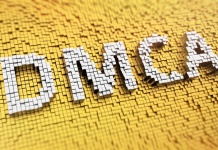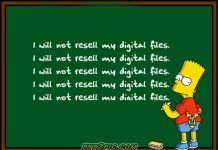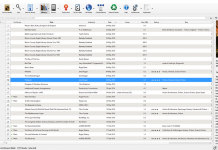 Who says Amazon’s Kindle Store is the only e-tailer offering new best-sellers at $10 or close to it?
Who says Amazon’s Kindle Store is the only e-tailer offering new best-sellers at $10 or close to it?
On this Black Friday sales day, I resisted the urge to head to Best Buy for discounted e-gizmos, and instead I compared the prices of best-sellers from discount-oriented stores on the Web. So what patterns did I pick up?
First, the E prices of new hits are at last competitive against the hardback format that most big publishers favor for their stars’ first runs. And I don’t just mean Amazon’s e-prices. Many consumers, of course, would probably like to see the prices still lower, much lower, given the hassles of DRM. But just the same, the trend is downward, sharply. For comparison’s sake, I won’t even bother to list hardback prices later in this post—typically $20-$25 and up at brick-and-mortar stores. Even Amazon hardbacks can approach that level with shipping included. We’re really talking new books, but some of the e-discounts also stack up well against certain used best-sellers if you include UPS charges and the rest. E-bookers, rejoice! Significantly, a new survey of 5,000 Web surfers shows that low prices, not Kindle-style devices, are the key to growing E.
Second, the Kindle Store is beating Sony in best-seller prices, but the latter is still surprisingly competitive.
Third, some independent e-tailers are at least putting up a good fight.
Pattern One: Best-seller prices finally competitive against P
Yes, E is dramatically undercutting hardcover in the best-seller department at least. We can all can dream wild fantasies, such as publishers now caring a little more about midlist and backlists books. Fergit, though. The book world is too star-crazed, damn it, at least the tradies; and besides, many nonbestsellers already are on sale at low E prices, especially those published by small presses.
Meanwhile, for consumers, the shrunken prices of digitized best-sellers are great news. One e-store, BooksOnBoard.com, has even put out a news release pledging to try to compete against the prices of Kindle best-sellers, while offering 154,000 titles rather than 90,000.
Please note that I haven’t vetted BoB’s title count, and I also notice that some best-sellers, such as Clive Cussler’s The Chase, are apparently AWOL. And BoB’s online catalogue lists Allan Greenspan’s The Age of Turbulance at $19.99, twice Amazon’s e-price as of early Friday afternoon. Still, BoB’s best-seller prices generally appear to be in the Kindle range, as promised, and the news release is one more shot in the discount wars.Many publishers and old-fashioned bookstores, of course, will not be happy about E’s new pricing strength against P, at least within the best-seller category. But they can find hope in the fact that the discount e-stores in most cases could be using the best-sellers right now as price leaders.
Pattern Two: Amazon’s Kindle store is beating Sony, but not always by much
As for the second pattern, I notice that Sony isn’t quite matching Amazon’s $10 prices on New York Times bestsellers but often is coming close.
Vince Flynn’s Protect and Defend, for example, goes for the usual $9.99 at the Kindle store and just 20 cents more at Sony Connect.
Pattern Three: Spunky Fictionwise and some other independents can at least put up a good fight
The third pattern? Well, even in the price wars (favoring the big boys), I found that competitive e-independents can at least put up a good fight if they’re willing to shrink margins and keep it up. And I don’t just mean BooksOnBoard. For example, Fictionwise, which draws many heavy readers of E, is very very close to the Kindle store right now in best-seller prices if you factor in discounts and rebates.
Fictionwise’s Micropay dollars are discounted more than usual at the moment, but even without Micropay, this cyber-indie looks surprisingly competitive, with some nice savings resulting from the $30 spent on a yearly Buywise Club membership.
Yes, many of my TeleBlog and PW readers don’t just write, publish or sell books but also buy them. And at least if their tastes run toward best-sellers—hey, such discerning folks buy the other varieties of books, too, right?–they may want to hold off on purchasing a $400 Kindle if they’re thrifty and open to dealing with other e-bookstores.
Kindle’s catches for bargain-minded book-shoppers—and a potential downside for publishers, too
For novices, yes, I can make a powerful argument for the Kindle, and I’m glad it’s around to fire them up about e-books. Based on what I know from afar—Amazon hung up on me when I requested a review unit—I’d recommend the Kindle for technophobic English majors with immediate needs. If tech-hip shoppers and book industry people think in the long term, however, they may see arguments against snapping up those $10 Kindle books and building whole libraries of them. In many ways the Kindle format could be a lot more expensive in the long run than it would appear at first.
You see, Kindle books are usable only on Machine K and not on your Windows desktop or laptop PC or on your cell phone or PDA. Most independent stores sell e-books that a number of machines can display. Sony books don’t work on PDAs but will work on machines that run Windows software. Nothing like the joys of the Tower of eBabel—all those clashing formats, to which Amazon CEO Jeff Bezo arrogantly added Kindle’s AZW! I’m still baffled why Newsweek’s Steve Levy didn’t really give a squat despite all the questions raised about the risks to Amazon’s older Mobipocket format. Amid media apathy, will Bezos let Mobi die in time to stymie his independent competitors using it, then jack up book prices? Has Jeff read The Octopus lately? As an instruction manual, perhaps? Just what’s the difference between books and grain? Where’s Frank Norris when we need him? Will many e-book publishers end up like Norris’s California farmers—forced to rely on just a few companies to ship their goods to market?
The specter of an Amazon- or Google-based e-book business, in time, or maybe yet another Microsoft monopoly, is a good argument for the IDPF‘s .epub standard for consumers, not merely as an exchange format. Let there be standards, just not centered around one company’s band of ego—however much some people may be dazzled by $10 prices. Beyond the other risks to shoppers and publishers alike, the different formats can carry different prices at the wholesale and sometimes even the retail level. Imagine the bookkeeping horrors among some e-tailers. What’s more, even Amazon and Google and Microsoft could benefit, with consumers less confused about e-books.
Book-by-book lowdown
Well, so much for the long term. Book by book, here’s the lowdown on top items on the New York Times bestseller list as of Friday afternoon. Please note that I’m using the NYT list, not some alternatives that I’d prefer, simply because Amazon is focusing its discounts around the Times’ list. All Fictionwise prices are with BuyWise and Micropay rebates/discounts, and remember, BuyWise isn’t free. Still, it’s clear that Fictionwise isn’t planning to roll over dead in the face of competition from the Kindle.
HARDCOVER FICTION
1. STONE COLD, by David Baldacci
Amazon Kindle: $9.99
Sony Reader’s Connect store: $11.39
Fictionwise (Adobe Reader 7, eReader, Microsoft Reader, Mobipocket): $9.85
BookOnBoard.com (same formats as Fictionwise): $15.19-$15.76
2. CREATION IN DEATH, by J. D. Robb
Amazon Kindle: $9.99
Sony Reader store: $12.99
Fictionwise (eReader, Microsoft Reader, Mobipocket): $9.71
BooksOnBoard (Adobe, eReader, Microsoft, Mobipocket): $9.99
3. THE CHASE, by Clive Cussler
Amazon Kindle: $9.99
Sony Reader store: $12.99
Fictionwise with discounts: $9.62
BooksOnboard: Not listed as of Friday
4. PROTECT AND DEFEND, by Vince Flynn
Amazon Kindle: $9.99
Sony Reader store: $10.19
Fictionwise (eReader, Microsoft, Mobipocket): $9.62
BooksOnBoard (Adobe, eReader, Microsoft, Mobipocket): $9.99
5. RHETT BUTLER’S PEOPLE, by Donald McCaig
Amazon Kindle: $9.99
Sony Reader store: $12.99
Fictionwise: Not listed as of Friday
BooksOnBoard: Not listed
HARDCOVER NONFICTION
1. I AM AMERICA (AND SO CAN YOU!), by Stephen Colbert, Richard Dahm, Paul Dinello, Allison Silverman et al.
Amazon Kindle: $9.99
Sony Reader store: $10.79
Fictionwise (Adobe Reader 7, eReader, Microsoft, Mobipocket): $9.85
BooksOnBoard (same formats as Fictionwise): $9.99
2. BOOM!, by Tom Brokaw
Amazon Kindle: $9.99
Sony Reader store: $10.77
Fictionwise (eReader, Microsoft, Mobipocket): $9.77
BooksOnBoard (Adobe, eReader, Microsoft): $9.99
3. RESCUING SPRITE, by Mark R. Levin
Amazon Kindle: $9.99
Sony Reader store: $10.19
Fictionwise (eReader, Microsoft, Mobipocket): $9.82
BooksOnBoard (Adobe Reader 7, eReader, Microsoft, Mobipocket): $9.99
4. CLAPTON, by Eric Clapton
Amazon Kindle: $9.99
Sony Reader store: $10.77
Fictionwise (eReader, Microsoft, Mobipocket): $9.77
BooksOnBoard (Adobe Reader 7, eReader, Microsoft, Mobipocket): $9.99
5. THE AGE OF TURBULENCE, by Alan Greenspan
Amazon Kindle: $9.99
Sony Reader store: $12.99
Fictionwise (eReader, Microsoft, Mobipocket): $9.52
BooksOnBoard (Adobe 7, eReader, Microsoft, Mobipocket): $19.99 (not a typo)
Technorati Tags: Amazon , Amazon Kindle , Fictionwise , BooksOnBoard , Fictionwise.com , BooksOnBoard.com , eReader , Microsoft Reader , Mobipocket , Adobe Reader , Adobe Reader 7 , Jeff Bezos , Newsweek , Sony , Sony Reader , Sony Connect


































Synchronicity. YMail has been wonky today (too much turkey yesterday?), so you might not have gotten the email I sent around before you posted this. I did my own little search today for one of my fave authors, Christopher Fowler. His excellent Bryant & May mysteries are now e and both Kindle Store and Sony Connect have them are identical prices, except for the latest. The prices are low due to them bow being in paperback — and I even think the e prices are *lower* than the paperback ones! The one price difference, for the hardcover, is a $2.37 or so gap. I can wait for that price to drop when it goes paperback in print. And Victor Gischler’s excellent mysteries are identically priced at Connect and Kindle stores.
Point is, for what I read, the price of e has now dropped to where I should really get a Reader now. I never bought these books in print because I can no longer sustain their storage and moving. In one swoop, though, there are now *9* books I want to buy in e. That’s a *huge* change in things!
If other people start investigating like I have, they might come to the same conclusion. Hope so.
Hi David,
Thanks for revealing this untold story in the ebook world.
One note I have is, Fictionwise has implemented our new pricing not just on a hundred or so best sellers, but on every single DRM ebook released in the past 90 days. That’s over 1000 titles that have an effective price of $9.99 or less for Buywise club members, after rebates and discounts apply. Even for non-Buywise members, the prices are typically in the $10 to $13 range depending on what the list price is, after rebates.
Something that is a little misleading is, when Amazon first put kindle on their front page they strongly implied that hardcover best sellers would *always* be $9.99 or less. Arguments broke out in their own kindle groups about whether their phrasing really meant “always”, or was simply easy to misinterpret that way. A couple days later Amazon changed the wording a little and added “unless otherwise posted.” So they are already backtracking on the “always 9.99” language. Stay tuned.
As far as title counts, those can sometimes be deceiving. Fictionwise carries over 43,000 titles right now, and those are actually different titles, and all of them are from reputable publishers, not vanity publishers. We do not count each different format as a different title. We have found that many ebook retailers inflate their counts by, for example, counting the same title four times if they carry Mobi, LIT, ereader, and Adobe.
Amazon’s title counts are also a little misleading, but for a different reason. A very large number of their titles are things the average consumer would never read. For example, out of their 88,000 titles, over 7,000 are in the category “Sociology”. Which is great if you’re a sociologist, but most consumers won’t be reading those kinds of titles. That’s just one example. As far as mainstream reading material from non-vanity publishers go, my impression from combing through it for a while is that Amazon’s catalog is roughly the same as other major ebook retailers.
But overall, the kindle is great for the ebook world. It brings much-needed attention to our industry. and is already causing publishers to release more material in e-formats. I wish it were an open system, but that may come with time. I truly hope Amazon has a smashing success with Kindle, because that will encourage more devices to hit the market, and will bring many more people into the ebook world.
Take care,
Steve Pendergrast
Fictionwise
Hi,
Thank you for the coverage of the pricing and of BooksOnBoard.com. As you noted, we are matching and will match many of the $9.99 prices on a day to day basis – without rebates or paid club memberships. We want to keep customer accounting simple and give the individual max price benefit upfront, without requiring future purchases for the customer to get the benefit.
For a handful of titles meant to be at $9.99 (buit not there on our site), including two mentioned in the article above, we have also implemented a special ongoing promo code (999now) to bring Clive Cussler’s “The Chase,” David Baldacci’s “Stone Cold,” Valerie Plame Wilson’s “Fair Game,” Khaled Hosseini’s “A Thousand Splendid Suns,” and Douglas Preston and Lincoln Child’s “Wheel of Darkness” down to $9.99. This is because our pricing system was designed to prevent pricing (except via promo code) below a certain calculated cost to us. We did not anticipate that Amazon, as the dominant player in the space, would risk anti-trust action with pricing below cost.
The BooksOnBoard.com promo code is 999now (case sensitive) and we invite your readers to use this for these specific titles. Meanwhile, our developers are working to change the price/costing mechanism to reflect below cost pricing when needed. Other $9.99 pricing questions your readers may have can be directed to support@booksonboard.com and our team will investigate to see if we can help further.
To add to Steve P’s comments: BooksOnBoard and his company offer a value to readers Amazon does not offer, in that readers can put their purchases from us on multiple devices and have several formats from which to choose. This allows them to select whatever device they want, including PDAs, Macs, PCs, phones, etc., and does not lock them into a single $400 device and vendor. Our product is also more likely to work on other new devices likely to come out in the year ahead, keeping customer options open. For example, it’s not likely the Amazon proprietary format will ever work on a Sony Reader, but Adobe DRM format might. An obsolete ebook device – and there is a history of them – will not recover a few dollars in savings for a customer at the end of the day.
One other note of interest: MacMillan pulled Rhett Butler’s People from our Mobipocket feed two weeks ago after we had already positioned it for promotion. They are making it available only through the Mobipocket.com store, Amazon and Sony. It is not available to the rest of us, nor are the rest of the MacMillan imprints. Other MacMillan titles include all of the Andrew Greeley titles, the St. Martin’s Press line, etc. No explanation has been provided by MacMillan. This kind of action by dominant players in the book space is troubling at many levels.
Thank you again for your coverage of this issue. We are delighted that Amazon has entered the fray again after its pullout last year. Hopefully, they won’t delete customer bookshelves en masse again (as they did last year) if their device fails to meet their high expectations. Hopefully, too, they will only work constructively with ebook customers going forward.
Best regards,
Bob LiVolsi
BooksOnBoard.com
Steve, I absolutely agree with your wishes for the Kindle’s success–given the lift-all-boats effect! Of course, I hope that the Kindle’s standards compliance will come sooner rather than later. Meanwhile happy holidays!
An aside to readers: Fictionwise not only has devoted much thought to the standards issue, it’s also been a leader in the use of non-DRMed titles. Steve undoubtedly would love to see many more books unshackled if the publishers allowed (keeping in mind that like me he is anti-piracy and just want to make life easier for legitimate owners).
I wish S&S, Random and the rest would check out stats from FW suggesting that DRM harms sales. Same for Jeff Bezos and friends. Ample reasons exist for me to call DRM a lit and sales toxin. The best DRM is none, but social DRM could be a wonderful compromise.
Thanks,
David
>>>Other MacMillan titles include all of the Andrew Greeley titles, the St. Martin’s Press line
WTF?! St. Martin’s Press publishes one of my favorite authors: Ken Bruen. It’s shocking enough that his two series from them aren’t all e. It’s also shocking that while amazon has several titles for the Kindle, Sony Connect only offers *one*. As a potential buyer of ebooks (now that the prices have reached sane levels for titles available in print paperback), I can see there is no one-store-fits-all-needs. I don’t mind having to shop around (especially to compare prices — attn Fictionwise, your prices are higher and I don’t like having to “join” things for lower prices), but I don’t like the idea of book publishers restricting titles to a few sellers. Restraint of trade, anybody?
Regarding DRM, we are making progress there. We recently convinced Harlequin to release several titles in their “mini” series (novelets of about 10 to 12 thousand words) without DRM. With the music industry starting to release unencrypted MP3s, and with Random House recently experimenting with unencrypted audio books, I think there was real progress in 2007 on that issue.
We have over 14,000 unencrypted titles available in mobi format that can be read right now on Kindle. We have nearly 8000 in LRF format that work on the Sony reader, with more being converted every week, soon we should have all 14k multiformat titles for Sony.
And could support for iphone be far behind at Fictionwise? Hmmm, stay tuned.
The Kindle news caught my attention naturally as I am a writer and yesterday I noticed a lot of my titles up at Amazon in that format. Hmm. Let’s see what that does for sales overall. I will be most curious to get numbers. I have print titles with them, but quite frankly sell most of my books at Fictionwise, Ebooks.com, Mobipocket, etc. in that order. This is an interesting trend and may say something about the popularity of e-books…and not just that but the wonderful aspects of not having a title yanked off the shelf in two weeks as with some print distribution. My older titles are selling better now than when they were first released and some of them are over two years old. Of course, there are a lot of factors that influence your audience, but I am talking a steady increase with four different e-publishers in which my last quarter sales showed a significant gain in numbers in all books.
All right, as an author, that means something. A book you published two years ago is selling more copies now than it did when it was released? Something is up.
Is this Fictionwise gaining popularity? I think a great part of it is, but I have noticed just an increase overall from the home sites of my publishers and distributors as well.
I have made PAN, the published authors network acceptance to RWA through e-book sales, and the changing of the rules this year shows they (RWA is the largest writer’s organization in the U.S. last I knew) no longer measure author success through the name of their publisher but how many books they sell.
Good for them.
This changing technology is an interesting journey.
All best,
Emma Wildes
#1 bestselling author at Fictionwise, past six months
Emma and Steve both: Glad to hear the happy tidings!
Emma, congrats on your continuing success.
Steve, you’ve been great on the DRM front. Nice going on the progress with Harlequin! If you’ve got a moment, why not write up some details on the sales of DRMed versus nonDRMed titles, and I’ll quote you in my PW blog. Same for any updates on your no-DRM-related efforts with large publishers. I remain baffled why Random House didn’t follow through after that experiment at FW some years back. What happened? Is it possible that the current people at Random would be more open-minded? And if they won’t try nonDRMed books, how about social DRM?
Finally, let us know if, like Bob LiVolsi, you’ve seen publishers withdraw certain Mobi feeds or any otherwise favor Amazon and Sony and the like.
As usual, I remain supportive of publishers and booksellers of all sizes and I want to make sure that the current excitement over the Kindle does not unfairly harm FW, BoB and other independents. Here’s to a diverse marketplace! In the PW blog, I’ll do what I can to encourage that.
Happy holidays,
David
Hi David,
I’ll compose my thoughts on the DRM stuff, can’t whip that off in a quick post here.
We were “de-authorized” by a couple of publishers from selling DRM mobi titles recently, but my understanding is that this was more of a clerical error in one case and part of a review of retailers in the other. One of them has already re-authorized us, and our expectation is the other should follow suit soon. I don’t think it has anything to do with Amazon.
Even if it did, my feeling is there is no anti-trust implication. Publishers can choose who is allowed to sell their books. Always have. The reason is simple: the publisher is in effect extending a line of credit to the retailer. The retailer can sell the ebook before being charged for it by the publisher, and that’s effectively a line of credit. Therefore, publishers are totally within their rights to pick and choose which retailers can sell their titles.
As far as I know there is no anti-trust implication from Amazon’s pricing policy either. Anti-trust laws allow for “loss leader” products that are sold below cost. Amazon selling a few dozen titles below cost would clearly fall under the loss leader provisions, in my opinion. Fictionwise sells ebooks below cost just about every week through our 100% rebates. It’s common practice in just about any kind of retail operation. And I think it’s great if it brings more people into reading ebooks.
-Steve P.
Steve, please take your time on the DRM commentary. If you want, email it to me with a big FROM STEVE P. in the subject line and I’ll run it in the main part of the blog. Many thanks! BTW, I really like the idea of Kindle-related things being settled without anti-trust lawyers, etc. Really appreciated your extra perspective on that. Bob L. feels the same way. But it sure won’t hurt to discuss Amazon’s impact on the indies!
Thanks,
David (feel free to call me at 703-370-6540 if I miss your DRM thoughts and don’t respond via email — usual busy email box thing)
Bob I read your comments but your company too has a real problem when it comes to customer support with your preferred hardware – the Cybook. If you don’t return it within 7 days UNOPENED then you can’t get a refund. So guess what – I opened it after a month and it was Dead On Arrival (not sure how I am expected to find out it was DOA without opening it – but I am sure your support team will get back to me on that). After a bunch of try this, do that with your support team they finally asked me to submit it for repair – they didn’t offer to replace it and weren’t willing to refund my money as I requested! So now I have to submit a device I never managed to use for repair! Given that level of customer service – do you really think you can take on Amazon????? Of course,Bookeen the manufacturer doesn’t believe this has anything to do with them since I didn’t purchase it from them….
[…] Original post by David Rothman […]